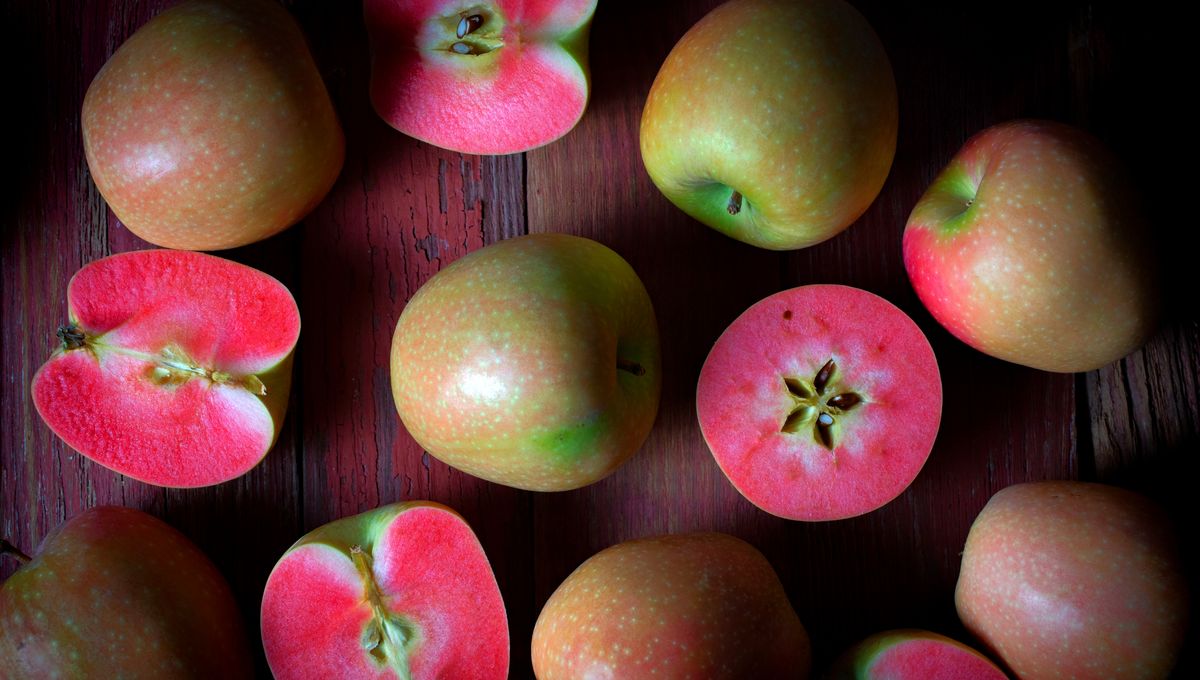
The idea of a red apple doesn’t seem all that unusual – unless we’re talking about its color inside. Whilst most apples have off-white flesh (and hopefully, a satisfying crispness), slice into a Mountain Rose or Redlove apple and you’ll find insides with a bright and vivid red. But why do some apples possess such colorful insides? Researchers believe it’s all down to an important molecular pathway controlling pigmentation.
Pigment production
The pathway in question controls the production of anthocyanins. A group of water-soluble pigments, anthocyanins are also found in a number of other unusually colored fruits and vegetables, giving them a distinct red, purple, or black hue. In the case of red-fleshed apples, a team of researchers demonstrated that anthocyanins likely give the flesh its characteristic color, caused by the expression of a gene called MYB10.
MYB10 is a transcription factor in an anthocyanin pathway, meaning that it regulates the expression of other genes that eventually result in anthocyanin production. When the team of researchers genetically altered Royal Gala apple trees to overexpress MYB10, the resulting fruit had intensely plum-red insides, and high levels of anthocyanins. This indicated that the molecule was responsible for the color of the flesh.
Color with a purpose
Beyond looking pretty, the high level of anthocyanins in red-fleshed apples has a more practical purpose. As the authors wrote, “These compounds are essential for plant health and performance, but are also considered as phytonutrients or markers for dietary health.”
Anthocyanins are thought of as antioxidants. In the case of plant health, antioxidants are important for protecting cells from free radicals. Whilst a normal byproduct of metabolism, they are highly reactive molecules, and can sometimes cause damage when they are not well-regulated.
This can happen in the human body too. “Free radicals can damage the body’s cells by changing a cell’s DNA, or it can alter a cell’s membrane,” explained registered dietitian Nicole Hopsecger, speaking to the Cleveland Clinic. “This interaction between free radicals and the body is called oxidative stress, which is often thought to be what contributes to the increased risk of developing chronic disease.”
A new superfood?
Red-fleshed apples, then, could be popular with health-conscious consumers – many antioxidant-rich fruits, like blueberries and goji berries, have been labeled “superfoods”. But if you’re hoping that means a red-fleshed apple a day will keep the doctor away, you might be disappointed. “Superfoods tend to be tied more to a marketing trend,” said Hopsecger.
“We can’t rely on any single antioxidant or nutrient to do all the work,” the dietitian explained. “We need to get a variety of those to make sure we stay healthy and the best way to do that is through a healthy, balanced and varied diet.”
Still, some have described the flavor of the red-fleshed Mountain Rose as like a “strawberry Jolly Rancher” – so it might be worth popping one in your lunchbox anyway.
Source Link: Why Are Some Apples Red Inside?